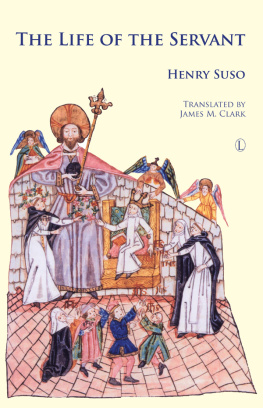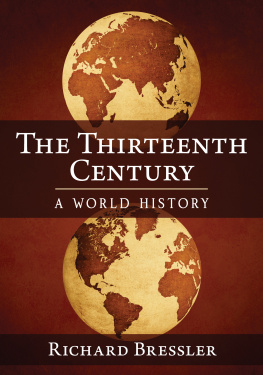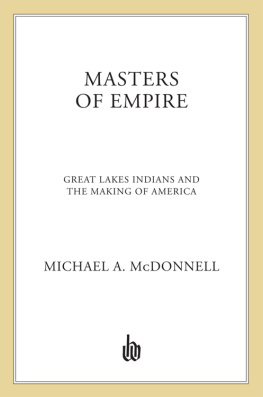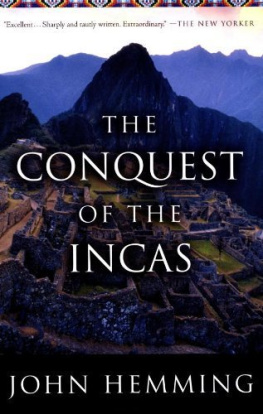BAMBA SUSO (d.1974) was one of the foremost Gambian griots and had an extensive knowledge of local oral traditions.
BANNA KANUTE (d. circa 1994) was a renowned musician and griot who played with the Gambia National Troupe.
GORDON INNES researched and wrote about Mande languages and oral literatures during a distinguished career at the School of Oriental and African Studies, University of London.
BAKARI SIDIBE is a Gambian scholar who has worked extensively on Mandinka oral literature.
LUCY DURN writes on African music, particularly from the Mande cultural world, and teaches at the School of Oriental and African Studies.
GRAHAM FURNISS writes on African oral and written literatures and is a specialist on Hausa. He also teaches at the School of Oriental and African Studies.
SUNJATA
Gambian Versions of the Mande Epic
by Bamba Suso and Banna Kanute
Translated and annotated by GORDON INNES with the assistance of BAKARI SIDIBE
Edited, with a new introduction and additional notes by LUCY DURN and GRAHAM FURNISS
PENGUIN BOOKS
PENGUIN BOOKS
Published by the Penguin Group
Penguin Books Ltd, 80 Strand, London WC2R 0RL, England
Penguin Putnam Inc., 375 Hudson Street, New York, New York 10014, USA
Penguin Books Australia Ltd, 250 Camberwell Road, Camberwell, Victoria 3124, Australia
Penguin Books Canada Ltd, 10 Alcorn Avenue, Toronto, Ontario, Canada M4V 3B2
Penguin Books India (P) Ltd, 11 Community Centre, Panchsheel Park, New Delhi 110 017, India
Penguin Books (NZ) Ltd, Cnr Rosedale and Airborne Roads, Albany, Auckland, New Zealand
Penguin Books (South Africa) (Pty) Ltd, 24 Sturdee Avenue, Rosebank 2196, South Africa
Penguin Books Ltd, Registered Offices: 80 Strand, London WC2R 0RL, England
www.penguin.com
These translations first published in Sunjata: Three Mandinka Versions by the
School of Oriental and African Studies 1974
Published with a new introduction and additional material in Penguin Classics 1999
8
Text and notes copyright Gordon Innes, 1974 and 1999
Introduction and additional material copyright Lucy Durn and Graham Furniss, 1999
All rights reserved
The moral right of the authors has been asserted
Except in the United States of America, this book is sold subject
to the condition that it shall not, by way of trade or otherwise, be lent,
re-sold, hired out, or otherwise circulated without the publishers
prior consent in any form of binding or cover other than that in
which it is published and without a similar condition including this
condition being imposed on the subsequent purchaser
EISBN: 9781101492864
Contents
Introduction
During the years between the Norman conquest of England and the reign of Henry VIII (c. 10661547), the world saw many empires rise and fall. Europes high Middle Ages saw the rise and decline of the Holy Roman Empire, the establishment of the Spanish Christian kingdoms of Castile, Leon, Aragon and Navarre, the Crusades, and the rise across Europe of a nascent bourgeoisie alongside the feudal nobility and the peasants. Elsewhere in the world, contemporaneously with the Sung dynasty in China and the Kamakura period in Japan, Muslim control was extended to North India as well as into Spain and North Africa, under the Abbasids and their successors.
In West Africa meanwhile, three great empires rose and fell, the empires of Ghana, Mali and Songhai. Ghana was famed in the 11th century throughout the Arab world as a producer of gold, gold which was traded across the desert from the heartland of the empire in the upper reaches of the Senegal river to North Africa and beyond. At its height (c. 1050) the empire stretched from the Niger bend to what is now middle Senegal, and from the desert across the savanna. The empire of Mali arose after the disintegration of the Ghana empire into a series of smaller competing states. Under the great Mansa (king) Musa, who made a famous visit to Mecca in 1324, the empire of Mali stretched from Senegal to Timbuktu and Gao in the present-day Republic of Mali. The third great empire, that of Songhai, reached its zenith under Askia Muhammad in the 1520s.
The epic narrative in this book is about the beginnings of the empire of Mali in the early thirteenth century. It concerns the struggle by Mande-speaking people for independence from rule by a Susu king. An Arab historian of the period said,
The authority of the rulers of Ghana dwindled away, and they fell under the domination of the Sosso people their Sudanese neighbours who subdued
The Susu/Sosso people had been subjects of the Ghana empire until, in alliance with other groups, they were able to assert their independence. During the twelfth century Susu extended its authority to incorporate territories of old Ghana and Mande chieftaincies. Early in the 13th century the greatest king of the Susu, Sumanguru Kante, found himself confronted by a revolt of the Mande-speaking peoples under his control led by Sunjata. The victory of Sunjata over Sumanguru put an end to the Susu kingdom and began the establishment of the great Mali empire over a large part of the West African savanna.
The Sunjata epic in all its varied and various forms relates aspects of this history. N. Levtzion summarizes the Arabic chronicler, Ibn Khaldun, and oral tradition as follows:
Sundjata, an exiled prince from a Malinke [Mande] chiefdom on the Sankarani (a tributary of the Upper Niger, on the border between modern Guinea and Mali), was called back by his people to free the country from the yoke of Sumanguru Kante, the oppressive king of Sosso. A collation of various traditions suggests that Sundjata had first endeavoured to unite under his authority the different Malinke chiefdoms, both by contracting treaties of alliance and by coercion. At the head of the united force of the Malinke, Sundjata defeated the powerful Sumanguru. The combat between the two great warriors is presented by the oral traditions as a struggle between two powerful magicians.
The oral tradition is, of course, never a single source and never the same story. The closest to an integrated narrative is perhaps that created by the Guinean scholar D. T. Niane in 1965. Niane was writing for an international audience, creating a prose synthesis from a number of performances by the same jali (griot). We summarize below the narrative as he renders it in his book, Sundiata: an Epic of Old Mali, but with names as they occur in the Mandinka versions given in this volume.
The story
In the early thirteenth century, the Mande people were organized into many small kingdoms, such as Sibi, Kita, Neema, among others. Sunjatas father, Naareng Makhang Konnate, was king in Niani, within Manding, in what is now eastern Guinea. He already had two wives, but was advised to take a third wife, Sukulung Konte, who was an ugly hunchback and a buffalo-woman, because it was predicted she would give birth to a great ruler who would bring the Mande to great power. She was a princess of the kingdom of Do. Sukulung Konte proved a good wife but was the object of much hatred and jealousy from her co-wives. Sunjata was born to her just before the birth of a half-brother to a co-wife; Sunjatas mother sent a slave to announce his birth at the court, while a griot was sent to announce the half-brothers arrival. The griot made his announcement before the slave did, so Sunjata was considered the younger brother and not eligible for the throne.
Sunjata Keita (the lion-thief who takes his inheritance), Sukulung Kontes eldest son, started life as a cripple and a glutton who at the age of seven was still crawling. After several years of being tormented by his step-mothers, Sunjata finally pulled himself up on to his own two feet by uprooting a baobab tree. Thereafter, Sunjata became renowned and feared for his superhuman strength, brilliant archery and remarkable bravery.











